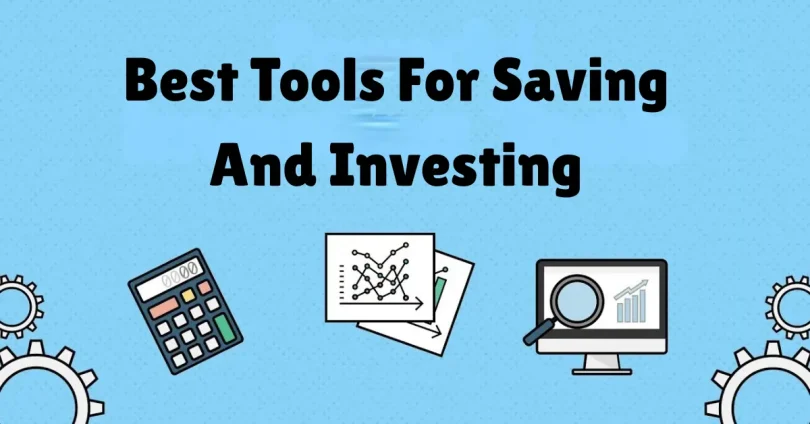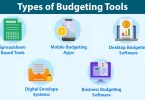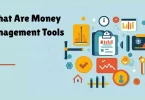Recent economic ups and downs have made it clear how important it is to balance short-term financial needs with long-term goals. For example, take Alex, a young professional who wanted to save for a vacation, build an emergency fund, and pay off credit card debt. By 2024, saving money has remained a top priority, just like over 56% of Americans who say their main financial goal this year is putting money aside for a rainy-day fund.
This shows a simple truth: using the best tools for saving and investing can make managing money much easier and more effective. Whether you’re just starting your career, juggling multiple responsibilities, or planning for retirement, these tools can help your money grow smarter and work harder for you. Let’s explore the best tools for saving and investing, how they work, and how you can use them in your everyday life.
1. High-Yield Savings Accounts (HYSAs)
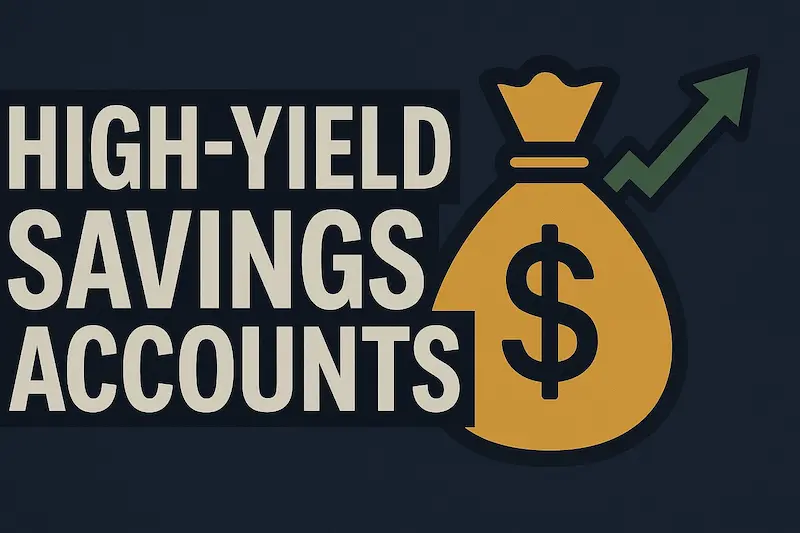
If you want your savings to grow without risk, high-yield savings accounts are an excellent starting point. Unlike regular savings accounts, HYSAs offer significantly higher interest rates, which allows your money to grow faster while staying safe.
For example, if you deposit $5,000 into a HYSA with a 4% annual interest rate, you could earn around $200 in a year—without touching the principal. Many online banks offer these accounts with no monthly fees and low minimum deposit requirements.
Best Practices:
- Compare interest rates among different banks and credit unions.
- Avoid accounts with hidden fees or complex withdrawal restrictions.
- Use HYSAs as your emergency fund or short-term goal account, not for everyday spending.
2. Budgeting and Expense Tracking Apps
Understanding your spending habits is critical before investing. Budgeting apps like Mint, YNAB (You Need a Budget), and PocketGuard can help you monitor your income, categorize expenses, and visualize your financial goals.
These apps often include features like:
- Real-time alerts when you overspend
- Automatic categorization of expenses
- Goal tracking for saving or paying off debt
For example, if you notice you’re spending $150 a month on subscription services you rarely use, a budgeting app can highlight this, and you can redirect that money to savings or investments.
Tip: Link these apps to your checking account to automatically transfer money to savings accounts, making saving effortless.
You may also like to read this:
12 Wealth Building Habits of Successful People 2025
What Are Money Management Tools? A Simple Guide
7 Types of Budgeting Tools For Smarter Money Management
Master How To Use Expense Tracker Apps Effectively Today
Why Financial Planning Software Is Important For Success
3. Robo-Advisors for Investing
If you’re new to investing, robo-advisors are a convenient and low-cost way to get started. Platforms like Betterment, Wealthfront, and SoFi Invest use sophisticated algorithms to create and manage investment portfolios tailored to your goals and risk tolerance.
Benefits include:
- Automated portfolio management
- Diversification across stocks, bonds, and ETFs
- Tax-loss harvesting to minimize taxes on gains
- Retirement planning tools
For example, even starting with just $50 a month can grow significantly over years thanks to the power of compounding.
Tip: Start with a small, manageable amount and gradually increase your contributions as your comfort and income grow.
4. Micro-Investing Apps
For those hesitant to invest large sums, micro-investing apps like Acorns and Stash are perfect. They round up your everyday purchases to the nearest dollar and invest the spare change automatically.
Imagine buying a coffee for $3.50; the app rounds it to $4.00 and invests the $0.50. Over time, small contributions can grow into substantial investments without feeling like a burden.
Tip: Combine micro-investing with a solid emergency fund to ensure your investments don’t interfere with short-term needs.
5. Retirement Accounts
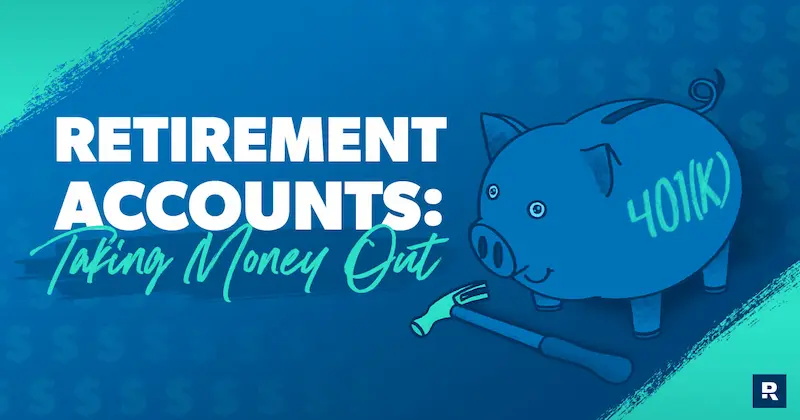
Planning for retirement is essential, no matter your age. Accounts like 401(k)s and IRAs offer tax benefits and long-term growth potential. Many employers match contributions to 401(k)s, essentially giving you free money for your future.
Here’s why retirement accounts matter:
- Tax-deferred growth allows investments to compound faster
- Employer contributions boost your savings
- Long-term investments can withstand market volatility
Tip: Max out employer matches before investing in other accounts. Diversify your portfolio within your retirement account to reduce risk and maximize growth.
6. Goal-Oriented Savings Apps
Apps like Qapital, Simple, or Twine are perfect for specific financial goals. Whether it’s saving for a new gadget, a vacation, or a house down payment, these apps make saving intentional and trackable.
Features to look for:
- Automatic round-ups on purchases
- Goal visualization and progress tracking
- Ability to split goals into smaller milestones
Tip: Breaking large goals into smaller, achievable steps helps you stay motivated and consistent.
7. Investment Education Platforms
Tools alone aren’t enough; knowledge is power. Platforms like Investopedia, Morningstar, and Khan Academy offer free or affordable courses on investing, portfolio management, and market trends.
By educating yourself, you can:
- Understand risk vs. reward
- Make informed investment decisions
- Avoid common financial mistakes
Tip: Dedicate a few minutes daily to learning about finance—it compounds just like your investments.
8. Automatic Savings Plans
One of the simplest ways to ensure consistent saving is through automatic savings plans offered by many banks and apps. These plans automatically transfer a set amount from your checking account to your savings account on a regular schedule—weekly, biweekly, or monthly.
Benefits include:
- Reducing the temptation to spend
- Building savings without thinking about it
- Helping you reach financial goals faster
Tip: Start with an amount you’re comfortable with and gradually increase it as your income grows. Even $20 a week can accumulate to over $1,000 in a year.
9. Certificates of Deposit (CDs)
If you want to save with guaranteed returns, Certificates of Deposit (CDs) are worth considering. CDs are time-bound deposits offered by banks with higher interest rates than regular savings accounts. The trade-off is that your money is locked in for a set period—ranging from a few months to several years.
Best Use Cases:
- Short- to medium-term savings goals
- Emergency fund surplus
- Money you won’t need immediately
Tip: Laddering CDs—staggering their maturity dates—can give you liquidity while maximizing interest.
10. Peer-to-Peer (P2P) Lending Platforms
For more adventurous investors, P2P lending platforms like LendingClub or Prosper allow you to lend money to individuals or small businesses in exchange for interest payments. While riskier than traditional savings accounts, P2P lending can generate higher returns.
Considerations:
- Understand the borrower’s creditworthiness
- Diversify loans to reduce risk
- Start small and only invest money you can afford to lose
Tip: Treat P2P lending as a small part of a diversified investment strategy rather than your primary tool.
11. Stock Market and ETFs
Investing directly in stocks or ETFs (Exchange-Traded Funds) is one of the most effective ways to grow wealth over the long term. ETFs offer diversification across multiple stocks or sectors, reducing individual stock risk.
How to Get Started:
- Use brokerage accounts like Fidelity, Charles Schwab, or Robinhood
- Research companies or funds before investing
- Focus on long-term growth rather than short-term gains
Tip: Dollar-cost averaging—investing a fixed amount regularly—helps minimize the impact of market volatility.
12. Financial Planning Software
For those managing multiple accounts, loans, and investments, financial planning software like Quicken, Personal Capital, or YNAB can provide a comprehensive view of your financial health. These platforms allow you to:
- Track net worth over time
- Monitor investment performance
- Plan for large expenses like buying a home or retirement
Tip: Regularly review your financial dashboard to adjust goals and strategies as life changes.
13. Emergency Fund Apps
An emergency fund is a cornerstone of financial security. Specialized apps like Digit or Chime help build emergency savings automatically, taking small amounts from your checking account based on spending patterns.
Benefits:
- Builds savings without noticeable effort
- Reduces reliance on credit cards during emergencies
- Encourages financial discipline
Tip: Aim for 3–6 months’ worth of essential expenses in your emergency fund.
Actionable Tips for Maximizing Your Tools
- Automate Everything: Savings, investments, and bill payments should be automated wherever possible to reduce the risk of missed contributions.
- Review Regularly: Check your financial tools at least once a month to adjust goals, rebalance investments, and track progress.
- Start Small, Stay Consistent: Even small, consistent contributions grow over time due to compounding.
- Diversify Your Tools: Don’t rely on just one savings or investment method—combine HYSAs, retirement accounts, robo-advisors, and other tools for a well-rounded strategy.
- Educate Yourself Continuously: Knowledge reduces risk and improves decision-making, so dedicate time to learning about investing and personal finance.
Final Thoughts
Choosing the best tools for saving and investing can transform how you manage your money. Combining high-yield savings accounts, budgeting apps, robo-advisors, micro-investing apps, and educational resources helps you create a balanced strategy that fits your life stage and goals.
Remember, consistency is key. Even small contributions, made regularly, can grow into significant financial security over time. Whether you’re building an emergency fund, paying off debt, or growing wealth for retirement, the right tools make your financial journey simpler, smarter, and more rewarding.
With the right approach, you can confidently take control of your finances and plan for a secure, stress-free future.
FAQs: Best Tools for Saving and Investing
1. What are the best tools for saving money?
The best tools for saving include high-yield savings accounts (HYSAs), automatic savings plans, goal-oriented savings apps like Qapital or Twine, and budgeting apps such as Mint or YNAB. These tools help you build a habit of saving consistently and track your progress toward financial goals.
2. Which apps are best for tracking expenses?
Popular expense tracking apps include Mint, YNAB (You Need a Budget), PocketGuard, and Personal Capital. They allow you to monitor spending, categorize expenses, and create budgets that align with your financial goals.
3. What is a robo-advisor, and how does it work?
A robo-advisor is an automated investment platform that creates and manages a diversified portfolio based on your risk tolerance and goals. Examples include Betterment, Wealthfront, and SoFi Invest. They handle tasks like rebalancing and tax-loss harvesting, making investing easier for beginners.
4. Can I start investing with very little money?
Yes! Micro-investing apps like Acorns and Stash allow you to invest spare change or small amounts regularly. Robo-advisors also let you start investing with as little as $50 per month. Over time, these small contributions can grow significantly thanks to compounding.
5. How much should I keep in an emergency fund?
Financial experts typically recommend keeping 3–6 months’ worth of essential expenses in an emergency fund. This ensures you can cover unexpected costs like medical bills, car repairs, or temporary job loss without relying on credit.

